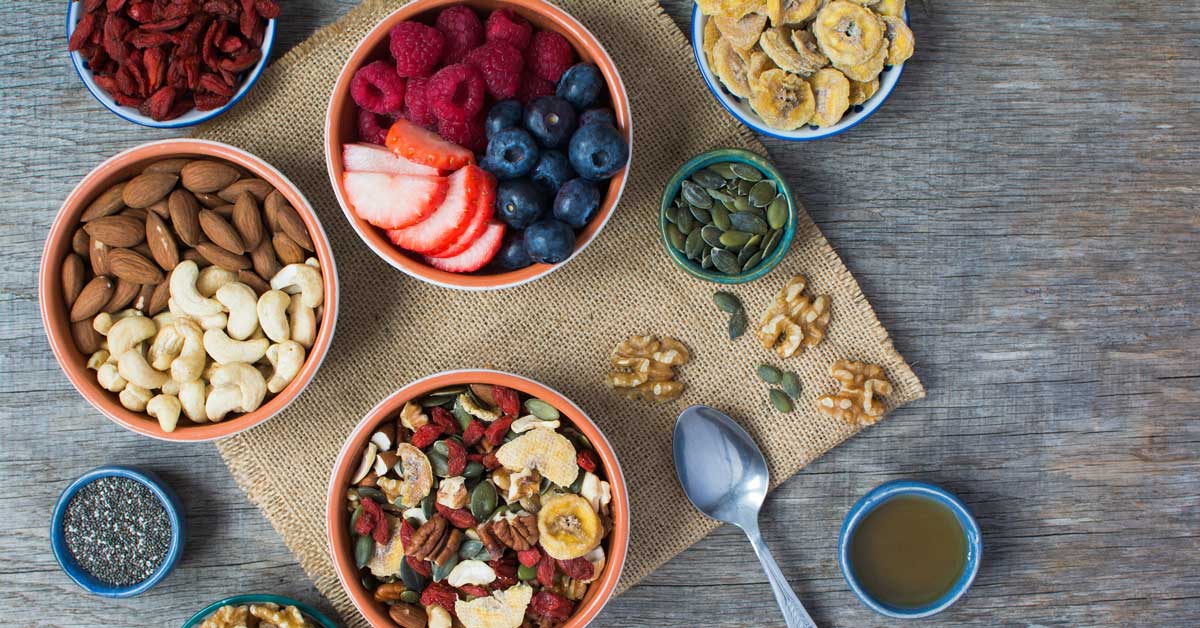Kris Gunnars, Bsc
August 1, 2018
The Paleo Diet — A Beginner's Guide Plus Meal Plan
The paleo diet is designed to resemble what human hunter-gatherer ancestors ate thousands of years ago.
Although it’s impossible to know exactly what human ancestors ate in different parts of the world, researchers believe their diets consisted of whole foods.
By following a whole food-based diet and leading physically active lives, hunter-gatherers presumably had much lower rates of lifestyle diseases, such as obesity, diabetes and heart disease.In fact, several studies suggest that this diet can lead to significant weight loss (without calorie counting) and major improvements in health.
This article is a basic introduction to the paleo diet, providing a simple meal plan and other essential information.
A Paleo Diet Meal Plan
There is no one "right" way to eat for everyone and paleolithic humans thrived on a variety of diets, depending on what was available at the time and where in the world they lived.
Some ate a low-carb diet high in animal foods, while others followed a high-carb diet with lots of plants.
Consider this as a general guideline, not something written in stone. You can adapt all of this to your own personal needs and preferences.
Here are the basics:
Eat: Meat, fish, eggs, vegetables, fruits, nuts, seeds, herbs, spices, healthy fats and oils.
Avoid: Processed foods, sugar, soft drinks, grains, most dairy products, legumes, artificial sweeteners, vegetable oils, margarine and trans fats.
The basic concept of the paleo diet is to eat whole foods and avoid processed foods.
Foods to Avoid on the Paleo Diet
Avoid these foods and ingredients:
Sugar and high-fructose corn syrup: Soft drinks, fruit juices, table sugar, candy, pastries, ice cream and many others.
Grains: Includes breads and pastas, wheat, spelt, rye, barley, etc.
Legumes: Beans, lentils and many more.
Dairy: Avoid most dairy, especially low-fat (some versions of paleo do include full-fat dairy like butter and cheese).
Some vegetable oils: Soybean oil, sunflower oil, cottonseed oil, corn oil, grapeseed oil, safflower oil and others.
Trans fats: Found in margarine and various processed foods. Usually referred to as "hydrogenated" or "partially hydrogenated" oils.
Artificial sweeteners: Aspartame, sucralose, cyclamates, saccharin, acesulfame potassium. Use natural sweeteners instead.
Highly processed foods: Everything labeled "diet" or "low-fat" or that has many additives. Includes artificial meal replacements.
A simple guideline: If it looks like it was made in a factory, don't eat it.
If you want to avoid these ingredients, you must read ingredients lists, even on foods that are labeled as "health foods."
Foods to Eat on the Paleo Diet
Base your diet on whole, unprocessed paleo foods:
Meat: Beef, lamb, chicken, turkey, pork and others.
Fish and seafood: Salmon, trout, haddock, shrimp, shellfish, etc. Choose wild-caught if you can.
Eggs: Choose free-range, pastured or omega-3 enriched eggs.
Vegetables: Broccoli, kale, peppers, onions, carrots, tomatoes, etc.
Fruits: Apples, bananas, oranges, pears, avocados, strawberries, blueberries and more.
Tubers: Potatoes, sweet potatoes, yams, turnips, etc.
Nuts and seeds: Almonds, macadamia nuts, walnuts, hazelnuts, sunflower seeds, pumpkin seeds and more.
Healthy fats and oils: Extra virgin olive oil, coconut oil, avocado oil and others.
Salt and spices: Sea salt, garlic, turmeric, rosemary, etc.
Try to choose grass-fed, pasture-raised and organic if you can afford it. If not, just make sure to always go for the least-processed option.











